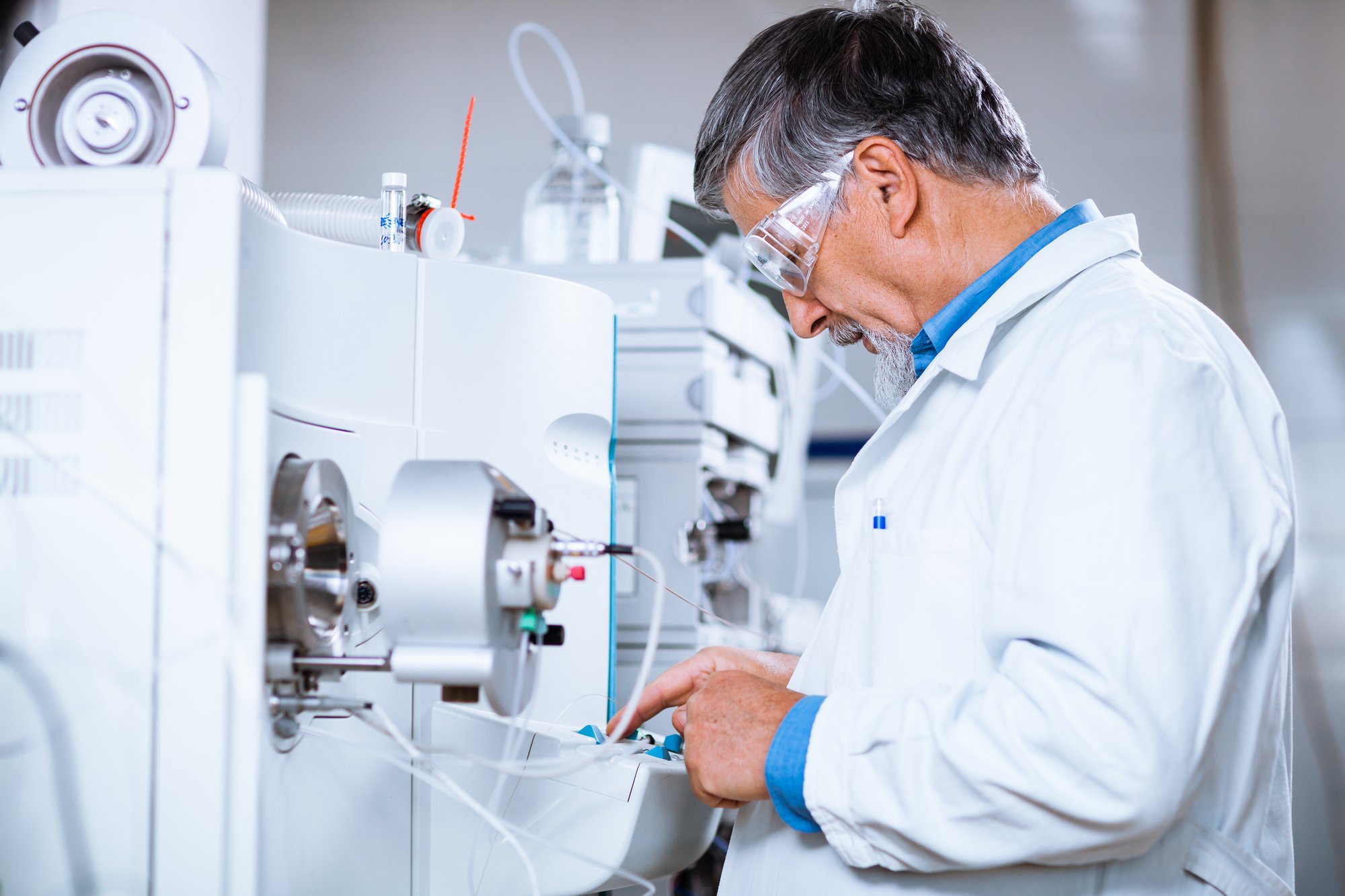Liquid Chromatography - Mass Spectrometry
Liquid Chromatography–Mass Spectrometry (LC-MS)
Partner with Quantum Analytics Group for LC-MS analysis that delivers the clarity, confidence, and compliance your project demands—whether confirming compound identity, quantifying trace impurities, or supporting regulatory submissions.

Ionization Techniques
The most widely used atmospheric-pressure ionization sources are:
Electrospray Ionization (ESI) – a soft ionization technique well-suited for polar, ionic, and high-molecular-weight analytes such as peptides, proteins, and metabolites.
Atmospheric Pressure Chemical Ionization (APCI) – effective for moderately polar, thermally stable compounds such as pharmaceuticals, lipids, and small organic molecules.
Both techniques generate gas-phase ions under atmospheric conditions, enabling direct coupling of liquid chromatography with mass spectrometry.
Mass Analyzer Configurations
LC-MS systems may employ different types of mass analyzers, each providing distinct analytical capabilities.
Single-Quadrupole LC-MS
A single quadrupole mass analyzer functions as a mass filter, transmitting ions of a specific m/z value to the detector. This configuration provides accurate mass determination and qualitative confirmation of molecular ions. Single-quadrupole LC-MS is ideal for routine screening, purity assessment, and molecular-weight confirmation of small molecules and semi-volatile compounds.
Tandem Mass Spectrometry (MS/MS or Triple-Quadrupole LC-MS/MS)
In a triple-quadrupole system, two mass-filtering quadrupoles (Q1 and Q3) are separated by a collision cell (q2).
How LC-MS Works
LC-MS combines liquid chromatographic separation—which resolves complex sample mixtures into discrete components based on chemical and physical properties—with mass spectrometric detection, which measures the mass-to-charge (m/z) ratio of ionized analytes. This combination allows for high-throughput separation, detection, and structural identification of compounds that are non-volatile, thermally labile, or polar—molecules typically unsuitable for gas chromatography.
Mass spectrometry provides molecular-level information including molecular weight, elemental composition (empirical formula), fragmentation pattern, and relative abundance. These data enable structural elucidation and quantitation of target analytes with a high degree of specificity.
Application
LC-MS and LC-MS/MS techniques are applicable to a wide array of analytical problems, including:
- Identification and characterization of unknown compounds and degradation products
- Quantitative analysis of drugs, metabolites, and trace contaminants
- Impurity profiling and confirmation of synthetic pathway intermediates
- Bioanalytical quantitation of endogenous and exogenous compounds in biological matrices
- Structural elucidation via fragmentation pattern analysis
- Composition analysis of complex mixtures such as formulations, extracts, and natural products
Benefits
Why This Technique Matters:
- High Sensitivity and Low Detection Limits - LC-MS techniques can detect analytes at trace and ultra-trace concentrations—often down to the picogram or femtogram range.
- Exceptional Selectivity and Specificity - Because mass spectrometry measures the mass-to-charge ratio of ions, LC-MS can distinguish analytes that are chemically similar or present in complex mixtures.
- Structural and Molecular Information - Unlike many detectors that simply quantify a signal, LC-MS provides structural insight through fragmentation patterns This allows analysts to identify unknown compounds, confirm molecular formulas, and study reaction mechanisms.
Our 3-Step Process to Safer, Compliant Products
From initial consultation to clear, actionable results, we make it simple to get the data you need to move forward.
Receive Technical Consultation
We assess compliance requirements, testing scope, and timelines
Get Fast, Accurate Answers
Expert testing and analysis delivered with actionable data
Ready to Get Results You Can Trust?
Book a consult with our team to discuss your goals, get expert input, and map out your next steps — with no pressure, just clarity.
.png?width=100&height=104&name=Frame%204%20(1).png)